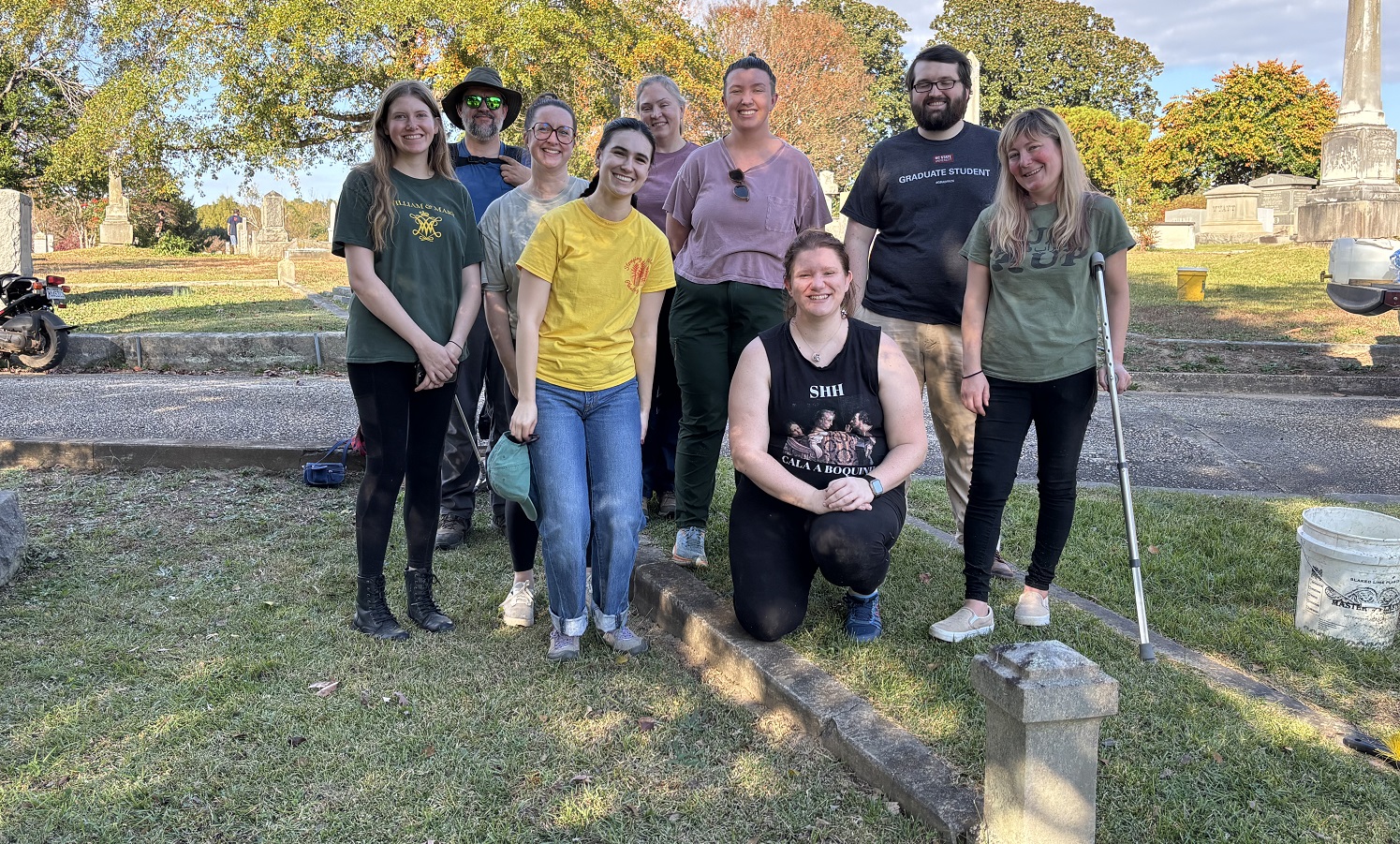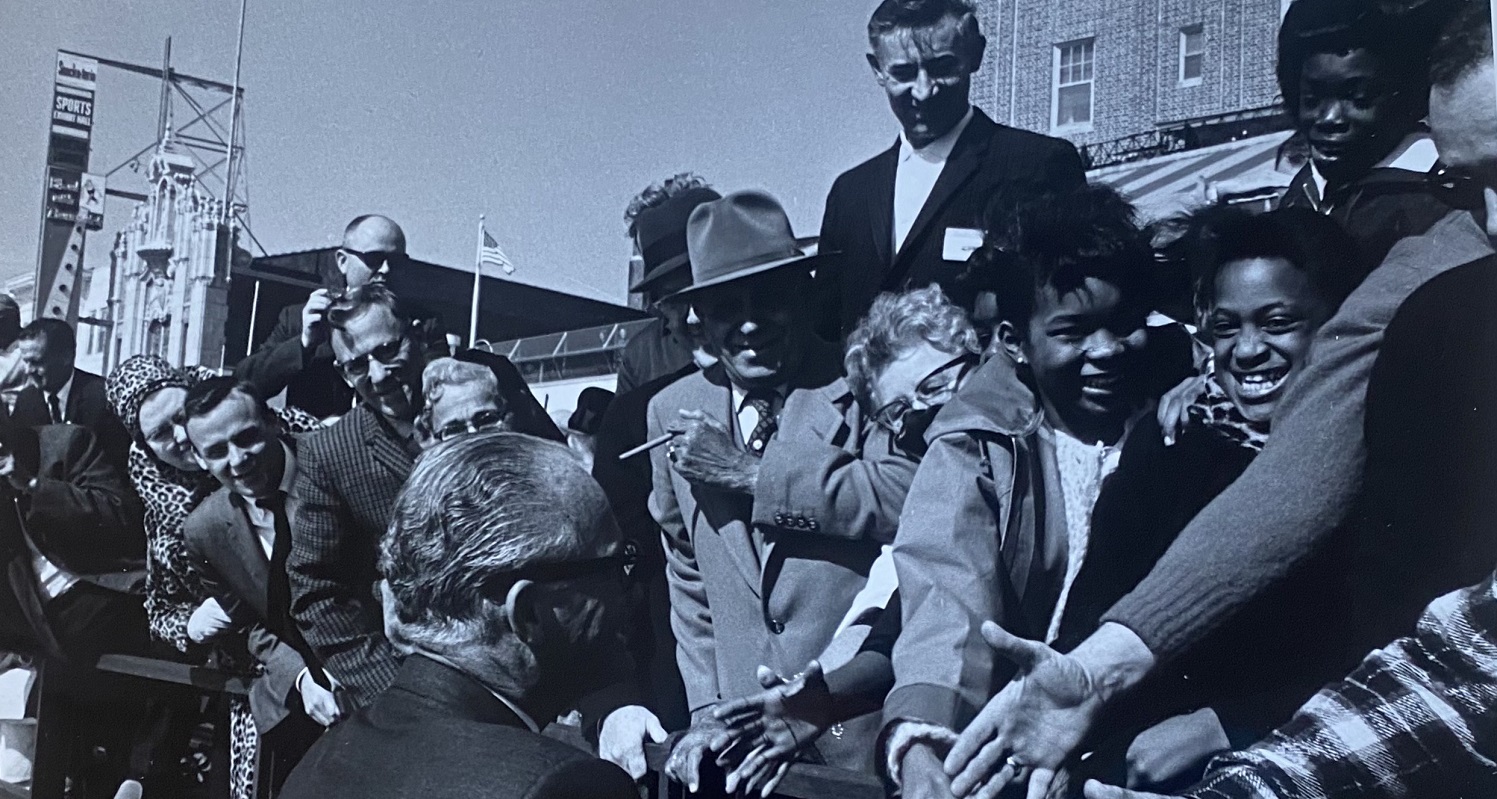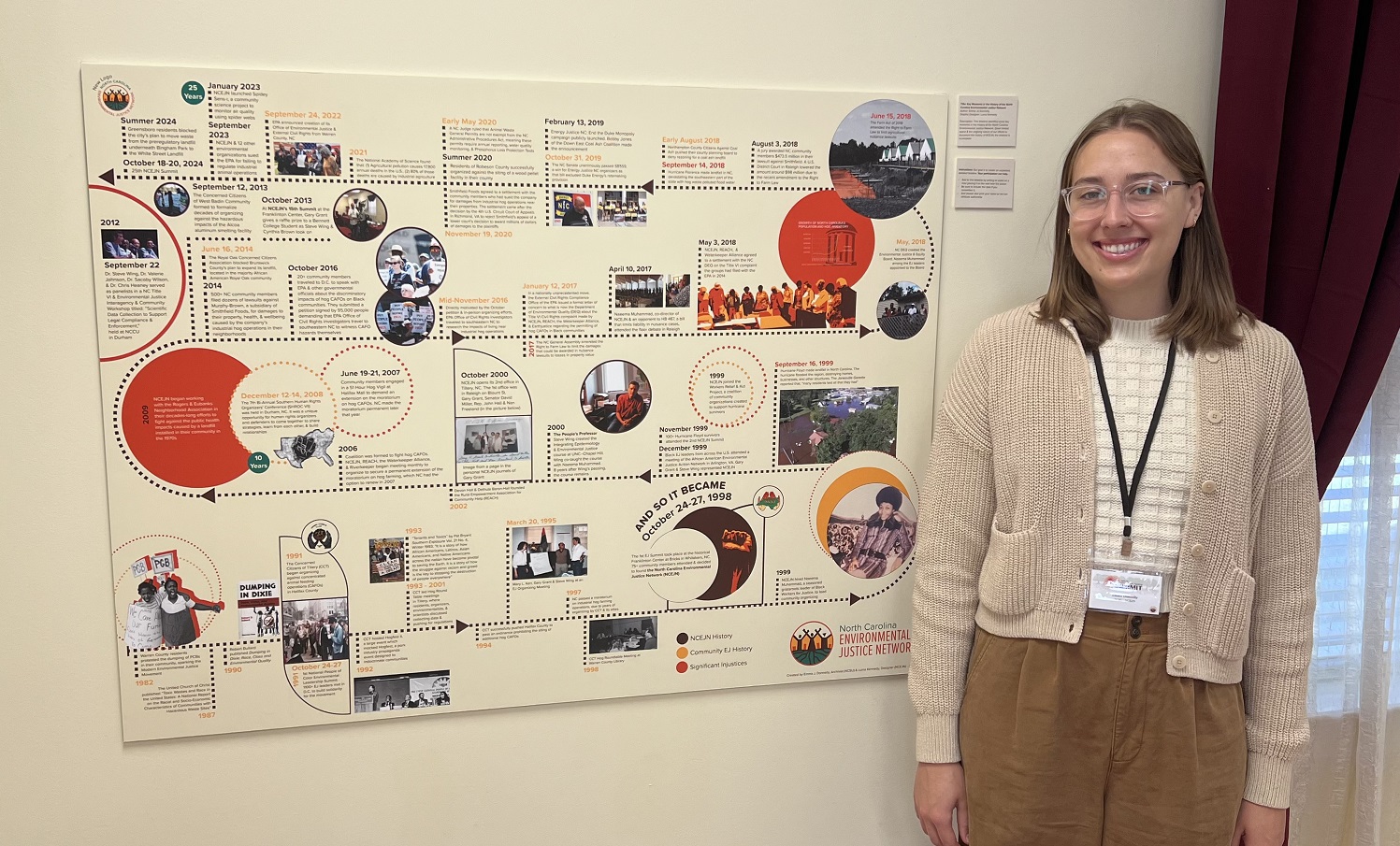Public History Graduate Student Curates Latino Credit Union Museum Exhibit
Ethan Ley recently served as the exhibit curator for the graduate Museum Studies course, in which he researched and coordinated the creation of the “Nuestra Cooperativa: Latino Community Credit Union” exhibit, displayed in Withers Hall.
Every year, as part of their final project, Dr. David Zonderman’s HI 591: Museum Studies class comes up with a proposal for an exhibit and the class votes on the proposal that is most viable and makes the most sense based on constraints. Ethan Ley had written about the Latino Community Credit Union’s development as part of a Historical Writing class and and had the idea that it would transfer well into an exhibit. Apparently, his classmates agreed and chose his proposal for the “Nuestra Cooperativa: The Latino Community Credit Union” exhibit.
 Although the credit union opened in Durham in 2000 and has branches throughout North Carolina, many people who aren’t of Latino descent have no idea about it. As Ley explains, “that is part of the purpose of the exhibit – to dispel the myth that they are just for Latinos; it caters specifically to recent immigrants but it’s open to anyone.”
Although the credit union opened in Durham in 2000 and has branches throughout North Carolina, many people who aren’t of Latino descent have no idea about it. As Ley explains, “that is part of the purpose of the exhibit – to dispel the myth that they are just for Latinos; it caters specifically to recent immigrants but it’s open to anyone.”
Because of the previous work Ley had done with the Credit Union, he already knew the staff and they were very excited about the exhibit. They were happy to make that connection with NC State and have story of their development shared with more people.

The exhibit text panels are appropriately in both English and Spanish – the translations being done by Ley, who is a strong believer in the importance and availability of bilingual text. The panels explain how the credit union -founded by Latino immigrants John Hererra and Ivan Para – was established to serve the financial needs of immigrants and solve the problem of mass robberies of primarily Mexican immigrants who kept their money at home rather than deal with unfamiliar financial institutions. The credit union helped the immigrants navigate the tricky financial structure of the U.S. Because they’re not a for-profit institution, they’re able to alter some of their institutional policies to cater specifically to immigrants and allow them to use alternative credit histories such as utility bills and rent in order to gain credit and get loans. They structure all their programming around the ideal of helping people get the things they need, not profits.


The credit union also donated many artifacts for the exhibit including newspaper articles about the opening of the credit union, brochures, charts and apparel, and both an original and current Tita the Squirrel savings bank from Tita’s Savings Club for Children.
Turnout was strong for the December 5 exhibit opening, which included Credit Union representatives and delicious Colombian food.


